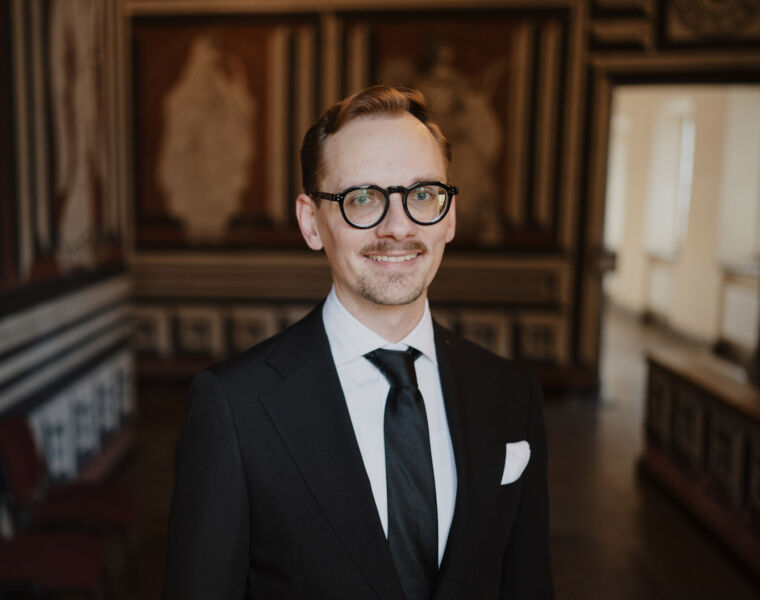
Jeremy Webb talks with the Danish-born automotive visionary Henrik Fisker in an exclusive interview for Luxurious magazine.
Luxurious Magazine was delighted to be approached by Henrik Fisker’s agent, who wanted to know if we would be interested in an interview with Henrik. Paul, the Editor, did not take long to reply with a firm ‘Yes’.
Before I get to the Q&A part of the interview, I will set out some details of Henrik’s work. Fisker started his Automotive design work for BMW in 1989, working on the E1 Electric concept car, followed by the Z8.
He left BMW, moving to Ford, where he worked on Aston Martin designs and the DB9 project. The AML V8 Vantage was designed by Fisker and it received many plaudits, it is still a very desirable car now some thirteen years since its production.

Henrik decided to set up his own coach works in 2005 and started the Fisker Coachbuild. While building this company up, Tesla hired him to work on the initial design of the Model S in 2007.
In the same year, Fisker Automotive was started, and the company produced the Fisker Karma electric sports car. The Karma came into production in 2011 and was the world’s first luxury electric sports car. The company sadly went bankrupt, but this led to Henrik forming a new company.
HF Design was launched and is still running, alongside this is Fisker inc, which is overseeing the production of a fully electric car with long range through the use of solid-state batteries.
The Emotion luxury Sedan car has a range of 400 miles and can be charged in 9 minutes to give a 125-mile range. A real game-changer for EVs. It can reach 160mph, with 0-60 in under 3 seconds. The electric motors produce 575KW, about 780hp going to the all-wheel drive layout.

Fisker does not just design and manufacture products with great speeds; the company has built the Orbit. This is a travel solution for regulated environments where autonomous vehicles can be used. The Orbit is an electric shuttle without a driver and should be launched in Autumn 2018.
So, down to the interview, which is brief, but as Henrik does not give many, it is great to have been part of it. I asked a variety of questions, and here are some that got answered.

I wanted to get to know what drove Henrik at an early age.
JW: What career did you want to get into when growing up?
HF: Car design has always been my dream since I was a little boy.
JW: At what age did you get involved in design?
HF: I started drawing when I was 4 years old, but really started designing when I was in my teen years, and then transitioned into attending the Art Center of Design to become a car designer.
JW: What started that process/passion?
HF: Playing with small toy cars, imagining how they could be designed differently.
From the initial replies, you could tell this man was somehow destined to be a designer. Some people just find the exact career for them. I moved on to some more questions.
JW: What was your first invention/design?
HF: The first vehicle where I was a designer was the BMW E-1 electric car that was shown at the Frankfurt auto show in 1991.
JW: Do you have a favourite car model, past or present?
HF: One of my favourite vehicles that I have not designed is the Ferrari 275 GTB.
JW: What was your first car?
HF: Alfa Romeo Alfasud 1.2
The next question I thought of was to find out what else Henrik is passionate about, away from designing, but it seems he is always switched on to his creative thinking.
JW: Do you have any hobbies/leisure activities?
HF: Designing cars, movies, painting and going to the gym/exercise
JW: How do you see car development in the next five years?
HF: Car design will be influenced by the new layout of electrical powertrains which means more interior space and smaller package. For exterior design, the biggest visual change will be the fact that an electric vehicle does not need a large air intake/grill on the front of it.
JW: Is battery development the only thing holding back very large mileage ranges between recharging?
HF: Yes!
JW: As well as kinetic energy recovery on electric and hybrid vehicles, do you see any other ways to put power back into the batteries?
HF: Potentially using solar, but it’s still not powerful enough
I was glad to see we both share the same concerns for autonomy, and personally, I can’t think of anything worse than sitting in a driverless car.
JW: What are your thoughts on fully autonomous cars?
HF: I believe it will be a very long time, possibly more than 10 years, before private people will own FULLY autonomous vehicles. The fully autonomous level 5 means self-driving under any condition, anywhere.
JW: Are any other cars/manufacturers grabbing your attention?
HF: The new Porsches.

JW: Can you please explain more about the specialities of the EMotion and where you see it heading?
HF: The range and charging time of the EMotion will be huge game-changers. Also, the EMotion is designed to look like a compact sports car, although it has the interior space of a full-size traditional sedan
As I mentioned, the Orbit Shuttle will be an autonomous transport system within closed environments, such as airports and university campuses.

JW: What are your plans for the Orbit shuttle?
HF: The plan is to improve public transportation and make it exciting, inviting, and cool!
JW: Do you support other inventors, and if not, would you be prepared to?
HF: Yes, I think any invention that contributes to a better life is important and it’s great that we live in a society that is encouraging innovation!
The Electric Vehicle Renaissance has truly begun – one that must be met with both timeless yet futuristic form and hyper-intelligent function.
![]()




You must be logged in to post a comment.